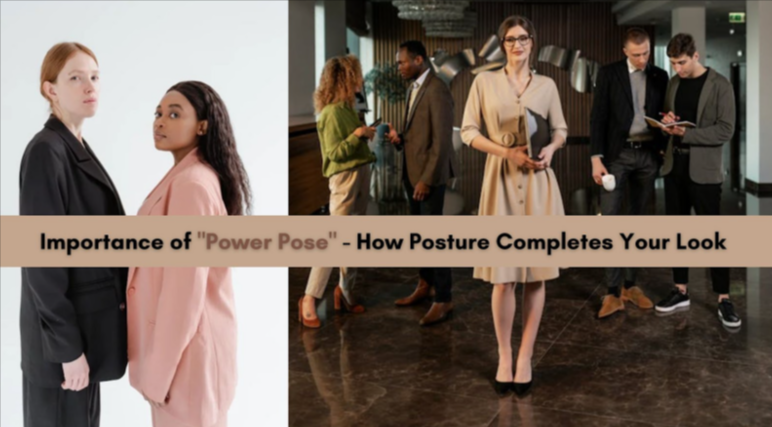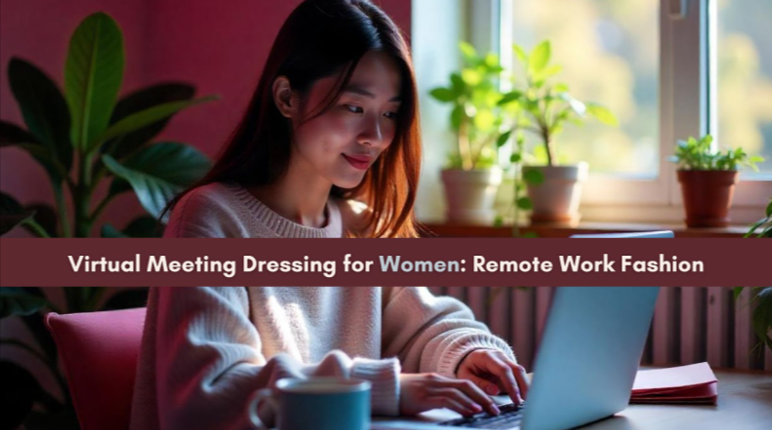
Importance of "Power Pose" - How Posture Completes Your Look
Standing tall like a superhero might seem theatrical, but science suggests it could be your secret weapon for confidence. Power posing, a technique where specific body postures are adopted to boost confidence, has captured public imagination and sparked scientific debate over the past decade.
Understanding Power Poses
Power posing is a self-improvement technique where people adopt expansive, confident postures to enhance their feelings of power and confidence. These poses typically involve making yourself appear larger through open, stretched-out positions that project authority and dominance.
What Makes a Power Pose
A power pose involves expansive and open postures, such as:
- Standing with chest lifted and head held high
- Keeping arms either raised or propped on hips
- Maintaining an open, confident stance
The Science Behind Power Posing
The concept gained prominence through Amy Cuddy's TED Talk at Harvard Business School, suggesting that brief postural adjustments could produce positive psychological and behavioral outcomes. While the initial hormonal claims have been debated, research indicates that power posing can reliably influence thoughts and feelings, particularly regarding:
Psychological Benefits
Power posing has shown consistent effects on:
- Positive mood enhancement
- Increased self-esteem
- Enhanced feelings of dominance
Postural Feedback
The idea of postural feedback suggests that our body language can influence our emotions and perceptions. Expansive postures, like those used in power posing, can send signals to our brain that help us feel more confident and powerful.
Essential Power Poses to Master
The Wonder Woman
Stand with legs shoulder-width apart, chest out, and hands placed firmly on your hips. This classic pose projects strength and authority.
The Victory Stance
Raise your arms in a "V" shape above your head, like an athlete celebrating a win. This pose embodies triumph and accomplishment.
The Executive
Sit with shoulders back, hands behind head, projecting calm confidence. This pose communicates authority and control.
Practical Applications
Power posing can be particularly beneficial in various professional scenarios:
Job Interviews
Taking two minutes to power pose before an interview can help reduce anxiety and increase performance confidence.
Public Speaking
Adopting power poses before presentations can help speakers feel more assured and project greater authority.
Important Meetings
Using subtle power poses during meetings can help maintain confidence and command attention.
Maximizing Power Pose Benefits
Timing and Duration
Hold power poses for about two minutes before important events. This duration has been found optimal for experiencing psychological benefits.
Private Practice
Find a private space to practice these poses, such as:
- Empty conference rooms
- Private offices
- Restroom stalls
- Stairwells
The Mind-Body Connection
Power posing works through the intricate connection between physical posture and mental state. When we adopt powerful positions, our brain receives signals that can alter our psychological state. This bidirectional relationship between body and mind helps explain why changing our posture can influence our emotional state.
The Importance of Power Posing for Women
Power poses for women are especially significant in environments where gender dynamics might affect perceptions of authority. By adopting high power poses, women can exude confidence and assertiveness in professional settings. This is particularly relevant when considering the best office wear brands for ladies in India, which emphasize not only style but also the empowerment that comes with dressing confidently.
Scientific Insights: Testosterone Levels and Cortisol Reduction
While the original study by Amy Cuddy suggested that power posing could increase testosterone levels (associated with dominance) and decrease cortisol (a stress hormone), subsequent meta analyses have provided mixed results. However, the psychological science behind feeling more powerful remains robust. Expansive poses are linked to increased feelings of empowerment even if the hormonal changes are less certain.
Best Practices for Power Posing
Do:
- Practice in private
- Maintain the pose for two minutes
- Combine with deep breathing
- Use before important events
Avoid:
- Power posing in public settings
- Forcing unnatural positions
- Expecting immediate results
- Using during actual interactions
Power posing represents a fascinating intersection of body language, psychology, and personal development. While the scientific debate continues regarding its physiological effects, evidence supports its ability to enhance subjective feelings of confidence and power. By incorporating these poses into your pre-performance routine, you may find yourself better equipped to face challenging situations with greater confidence and presence.
Remember, power posing isn't about dominating others – it's about empowering yourself to bring your best self to your biggest challenges. Whether you're preparing for a crucial presentation or gearing up for an important meeting, taking a moment to adjust your posture might just give you the confidence boost you need to succeed.
FAQs on Power Posing
How long should I hold a power pose?
Hold power poses for approximately 2 minutes to experience potential benefits.
What is the most effective power pose?
The "Wonder Woman" pose (hands on hips, feet apart, chest up) is considered one of the most effective and widely recognized power poses.
Can power posing help with anxiety?
Research suggests power posing may help reduce stress levels and increase feelings of confidence before anxiety-inducing situations.
When is the best time to do power poses?
Practice power poses before important events, such as interviews, presentations, or challenging meetings.
What are the proven benefits of power posing?
Studies show power posing can reliably improve subjective feelings of power, mood, and self-esteem, though physiological effects remain debated.




